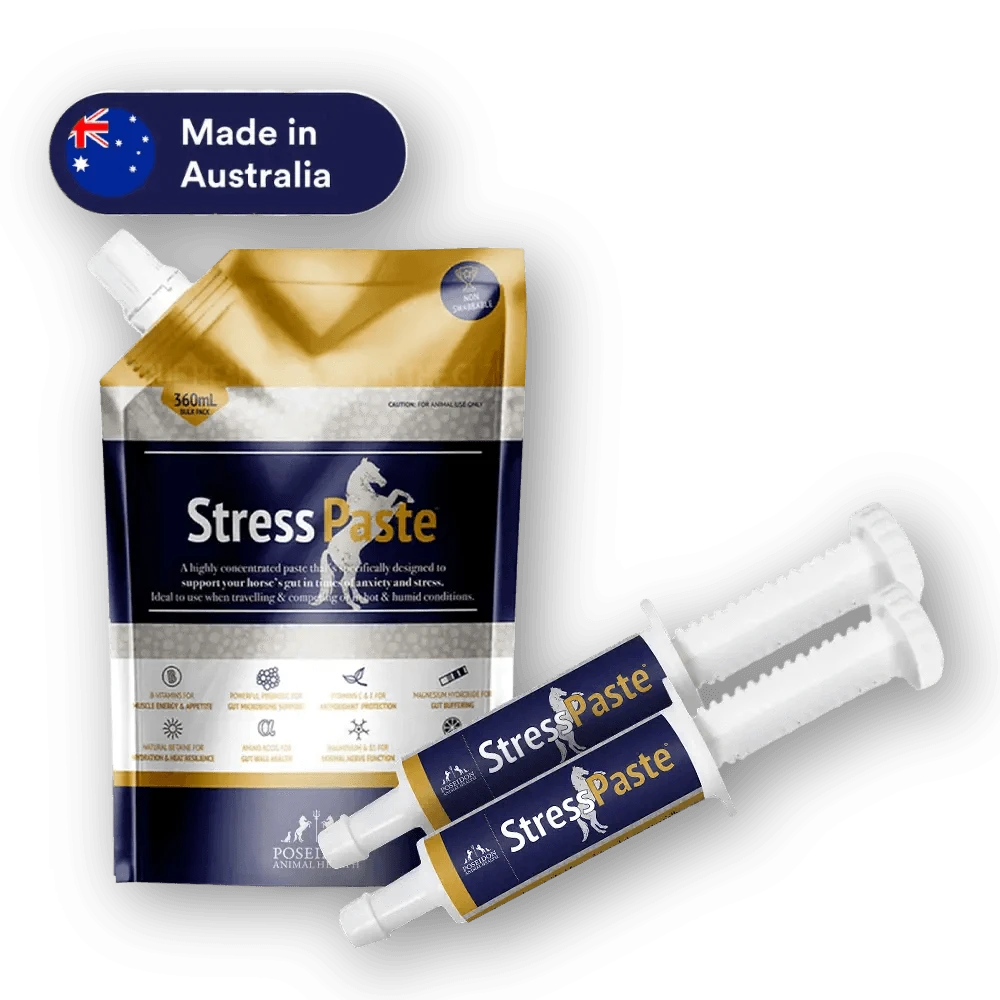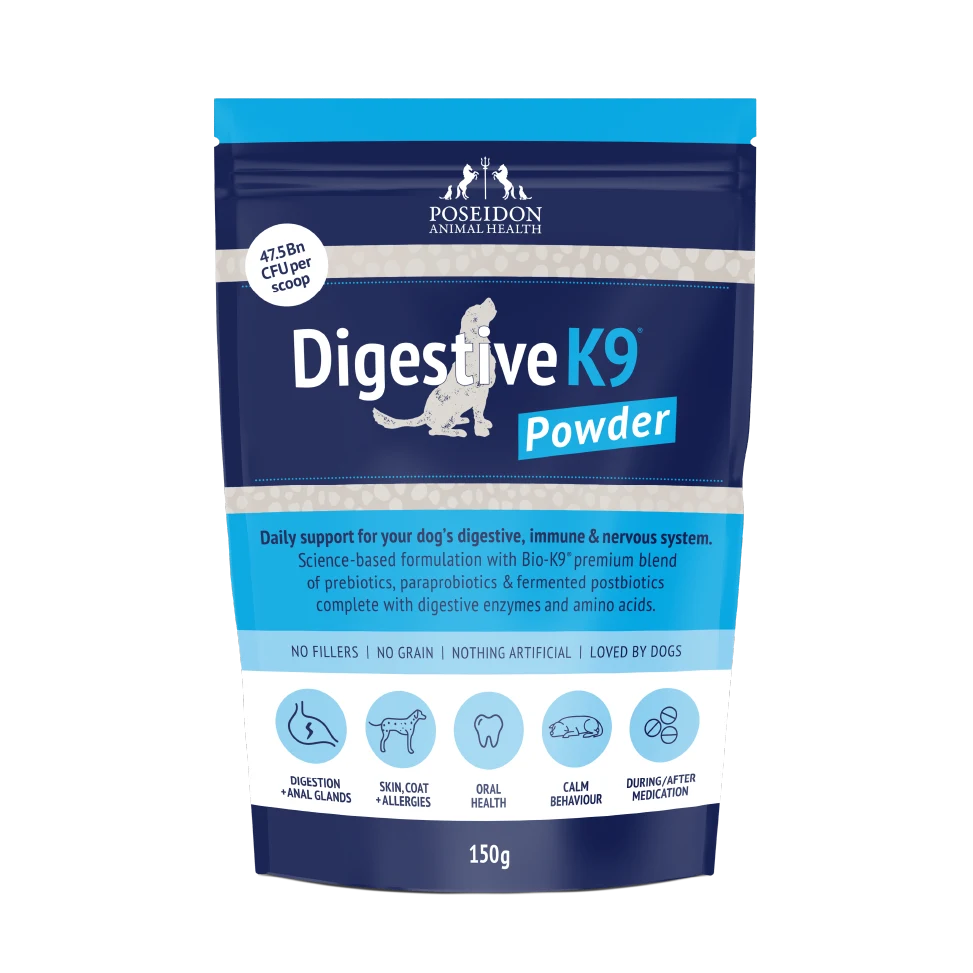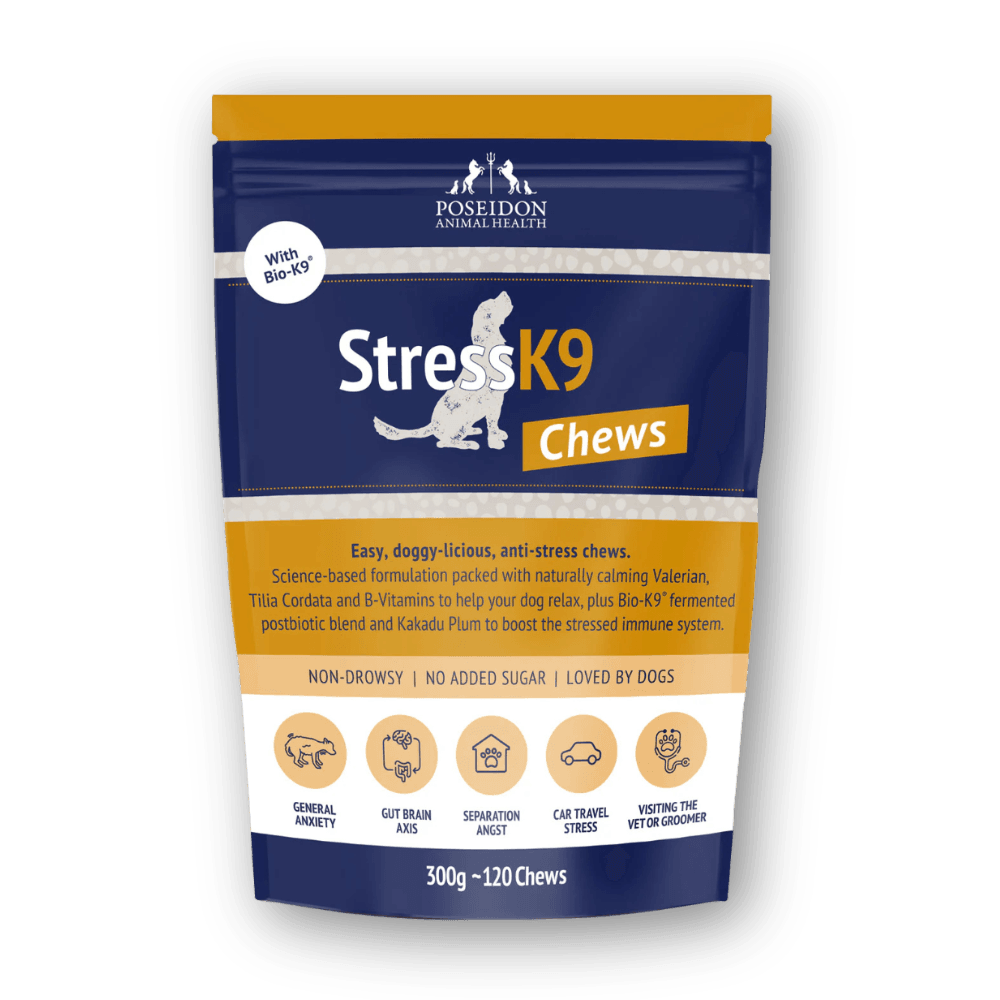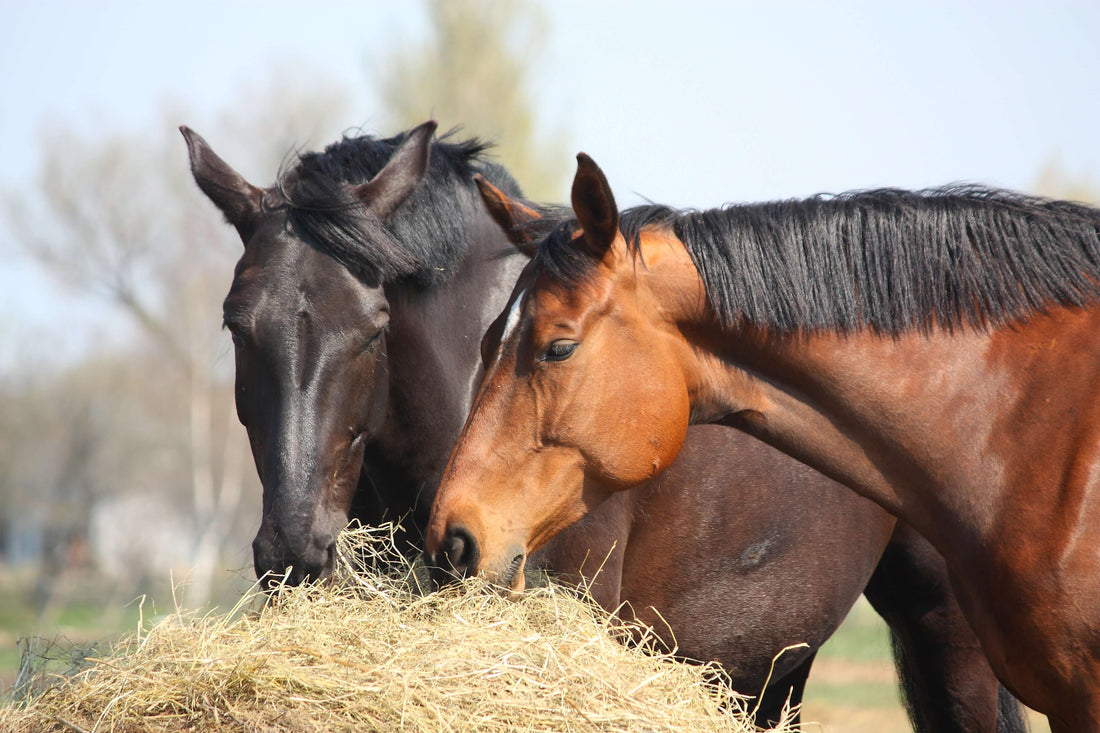
Dr Nerida McGilchrist, B Rur. Sc (Hon1) PhD RAnNutr
Hey! Want to know more about hay?
There’s so many different types of horse hay and it can get confusing when you start to try figuring out which hay to feed and why, or which horse hay to avoid and why. Here’s our comprehensive list of hays and grasses, the pros and cons and how they affect you horse's gut health;
LUCERNE HAY

PROS
Horses love lucerne so you rarely ever get ‘meals sent back to the kitchen’. Lucerne is also super nutritious, it contains lots of minerals (especially calcium) and is rich in fibre, and high in quality protein.
Lucerne hay is low in starch and water soluble carbohydrates, collectively known as the non-structural carbohydrates or NSC. Which means lucerne hay is safe for laminitic horses and ponies. It’s also high in calories which makes it the perfect hay for horses needing to gain weight and build muscle.
We love lucerne as part of almost every horse’s diet. It adds great nutrition and brings the aspect of variety in the form of a legume forage to a horse’s diet.
CONS
Lucerne is a high calorie hay, so for horses who are overweight it can become an issue. You need to feed lucerne hay in restricted amounts as it’s easy to gain weight on too much lucerne.
Lucerne’s high protein levels mean you can feed too much protein if you feed too much lucerne, for most horses this isn’t an issue but for horses in stables it means their boxes will be wet and smelly — as they need to drink a lot and urinate more to rid the excess nitrogen from the protein out of their body. This excessive urination can also lead to electrolyte depletion, and in extreme cases tying up in working horses. It’s important to remember though that it’s not the lucerne causing this as such. It’s the excess protein. So if you feed appropriate amounts of lucerne you won’t see these issues.
Its high calcium characteristic also needs to be managed carefully, especially for growing horses. Diets that contain only lucerne for youngsters will often have a calcium: phosphorus ratio that is too high which can then cause phosphorus deficiency and may affect correct bone development.
LUCERNE FOR GUT HEALTH
A big thumbs up! Studies show lucerne helps gastric ulcers heal. It’s a natural buffer so it’s a great forage to feed just before you ride or work horses to fill their stomach up and protect it from ulcers too. Plus it is rich in essential amino acids so it will help support the gut and its need for the amino acids it needs to stay healthy.
CEREAL HAY (OATEN, WHEATEN & BARLEY)

PROS
When made well, horses usually love cereal hay. Being ‘grasses’ cereal hay is lower in protein so it can be used as the base forage in a horse’s diet without providing too much protein.
Cereal hay contains lots of great fibre. Depending on its stage of harvest and its starch and water-soluble carbohydrate content, cereal hay may be anything from a high calorie feed to a very low-calorie hay, if you have the luxury of choice and are using cereal hay you can select which is best for your horses.
CONS
Cereals are temperate grasses so they have the ability to store large amounts of starch and water soluble carbohydrates (WSC) including fructans. We have seen oat forage with 30% plus starch+ WSC (collectively called non-structural carbohydrate, or NSC); which means cereal hay must be avoided for any horses that need a low NSC diet.
Cereal hays with a high fructan content can also cause a shift in hindgut bacteria toward the ‘bad’ bacteria. Fructan is one of their favourite meals. When horses are on a high fructan cereal hay, you might see some of the behavioural changes and some loss of fibre fermentation (with possible issues holding weight) that we see in horses on ‘uncooked grain’ diets. Plus fermentation in the hindgut of a high fructan cereal hay can cause excessive gassiness and mild colic.
Researchers in Western Australia (Jackson et al 2018) have also reported that prolonged exposure to the often-high WSC content of oaten hay contributes significantly to high levels of peripheral caries — demineralisation and then destruction of the dental tissues. So, from a dental health perspective there is a strong recommendation to avoid feeding horses primarily on oaten hay.
Not all cereal hay is high in NSC, but our advice would be if you are going to buy these types of hay in large amounts, get it tested before you purchase it.
OATEN HAY FOR GUT HEALTH
It’s a bit of a lucky dip. If you manage to get a low fructan oaten hay then this type of hay is great for gut health. It provides lots of fibre to keep the good bacteria in the hindgut healthy. It’s also a hay that requires a lot of chewing, so it’s great to stimulate saliva production.
On the downside if you do get a high fructan oaten hay it will feed the bad bacteria in the hindgut and may cause some discomfort from excess gas production.
RHODES GRASS HAY
PROS
This is one of our favourite hays for many reasons. Rhodes grass is a subtropical grass which means it can’t store large amounts of starch or water soluble carbohydrates (WSC). Rhodes grass will usually have a starch + WSC content (known together as the non-structural carbohydrates, or NSC) of less than 12% making it consistently safe to feed to horses that need a low NSC diet. Including laminitic horses and ponies.
Rhodes grass hay is usually a moderate protein, moderate calorie hay (depending on its stage of growth when it was harvested) so it lends itself well to being the base hay in almost any horse’s diet.
Horses don’t love Rhodes grass hay so they will often take their time in eating it. If you have easy keepers on restricted hay diets, this is a good thing as it extends the amount of time they are chewing and salivating, which should then reduce the risk of stomach ulcers.
CONS
For horses that are a bit fussy, Rhodes grass hay may be somewhat of a frustration. Other than that, there are really no downsides to this hay, it can make a valuable addition to any balanced diet.
RHODES GRASS HAY FOR GUT HEALTH
Rhodes Grass Hay comes in with flying colours on the gut health front. Lots of fibre to provide food for our favourite friendly bacteria. Plus it’s consistently low in starch and fructans so it won’t support the bad bacteria in any way.
TEFF HAY
PROS
Teff grass, like Rhodes grass, is a subtropical grass species. So teff hay is ‘usually’ a low starch and water soluble carbohydrate hay — known together as the non-structural carbohydrates, or NSC. Making it useful in the diet of horses that need a low NSC diet.
Teff is a lovely soft hay and horses seem to like it. It is also purpose-grown for horses so the quality of teff (or at least the teff we’ve seen) seems to be quite consistent.
CONS
Teff is not consistently low in NSC content. So some Teff is not low enough in NSC to be safe for laminitic horses.
Teff also contains a moderate amount of oxalate and has been observed to cause suspected ‘bighead’. When feeding Teff, careful supplementation with calcium is required.
There’s also something very odd about some teff. Some horses seem to exhibit dramatic behavioural changes which to me looks very much like the behaviour we see in horses affected by ryegrass mycotoxin. I see a lot of teff hay fed without any behavioural issues so most of it seems to be OK… just something to keep an eye out for if you do feed teff.
If you’re competing at a serious level, teff can also reportedly contain a substance called Synephrine. Synephrine is a natural alkaloid but is an illegal substance and swabbable, so it’s probably best to avoid teff if you are competing under rules that ban Synephrine.
TEFF HAY FOR GUT HEALTH
At this stage, we don’t know enough yet about teff hay to say for sure if it’s good for gut health or not. Teff has shown itself as being able to accumulate non-structural carbohydrates and particularly starch, so it has the potential to shift bacterial populations in the hindgut. As more information comes to light on this type of hay, we will update our blog!
RYEGRASS HAY
PROS
Horses generally find ryegrass hay very palatable, being a grass, it’s lower in protein, so it can be used as a base forage without providing too much protein.
Ryegrass hay can contain lots of great fibre and depending on its stage of harvest and its water-soluble carbohydrate content, ryegrass hay can be anything from a high calorie to a very low-calorie hay, so you can select which is most suitable for your horse.
Ryegrass is commonly grown for hay production in Southern Australia and New Zealand, therefore it is often easier to source, well made, and less likely to contain weeds.
CONS
Ryegrass often gets a bad rap from horse owners and there are a couple of reasons for this. Firstly, being a highly productive grass bred for livestock production, it can contain LARGE amounts of water-soluble carbohydrates (WSC) including fructans.
Ryegrass hays with a high fructan content can cause a shift in hindgut microbes toward the ‘bad’ bacteria. Fructan is one of their favourite meals. When horses are on a high fructan hay you might see some of the behavioural changes and some loss of fibre fermentation (with possible issues of holding weight). Plus, fermentation in the hindgut of a high fructan hay can cause excessive gassiness and mild colic. Not all ryegrass hay is high in fructan but my advice would be if you’re going to buy large amounts, get it tested before you purchase it.
For horses and ponies, sugars and starch in their diet (due to risk of laminitis) ryegrass hay should be avoided unless laboratory analysis shows it to be low (less than 10-12% dry matter) in starch and WSC (collectively called non-structural carbohydrate, or NSC).
Ryegrass also gets a bad reputation due to the risk of Mycotoxins (common ones being ergovaline and lolitrem B) produced by what is called Fungal Endophyte that live on the grass. However, due to dangers of these Mycotoxins to livestock health, many Endophyte-free or low Endophyte varieties have been bred ryegrass sown specific for hay production, which will often make the Mycotoxin risk very low. Interestingly, research into the effect of hay production (cutting, drying, baling and storing) and Mycotoxins (ergovaline) levels in Tall Fescue found that levels dropped between 30-60%. Given this the risk of Mycotoxin issues from ryegrass hay is unlikely to be an issue.
RYE GRASS HAY FOR GUT HEALTH
If you manage to get a low fructan ryegrass hay then it’s great for gut health. It provides lots of fibre to keep the good bacteria in the hindgut healthy, and for fussy horses it can be more palatable than other grass hays.
On the downside, if you do get a high fructan ryegrass hay it will feed the bad bacteria in the hindgut and may cause some discomfort from excess gas production and decreased fibre fermentation (resulting in weight loss, poor hoof quality and undesirable changes in behaviour).
MEADOW HAY (AKA MIXED SPECIES MOSTLY GRASS HAY)
Meadow hay is a non-specific type (variety) of hay. The term ‘meadow hay’ comes from Europe where native meadows are harvested for hay – containing native grasses and herbs like dandelions and daisies. In Australia and New Zealand however, meadow hay is a generic term used to describe a mixed grass hay which may or may not contain some clover. It’s most often used to describe hay which contains a mix of temperate grass species (not warm-season or tropical grass hays) and generally anything from ryegrass, cocksfoot, phalaris, timothy, brome grass, sweet vernal, fog grass, brown-top and so on, often the presence of some clover.
PROS
As meadow hay is often a mix of different species of grasses (and sometimes clover) this offers variety within the diet and some decent levels of fibre.
Pastures where meadow hay is harvested often are not geared towards being highly productive livestock feed, therefore the grass species they contain (plus lower fertility of the paddocks being harvested) mean that meadow hay can be lower in protein and water-soluble carbohydrates compared with ryegrass or cereal type hays.
CONS
Like any hay that contains temperate grass species, meadow hay has the potential to be too high in NSC for horses and ponies sensitive to sugar and starch in their diet. For these horses, testing hay or buying hay already with an analysis is recommended to ensure NSC is less than 10-12% (dry matter basis). For most other horses, the NSC levels in meadow hays present no problem.
Depending on the species and maturity of the meadow hay, horses can find it less palatable. Species like fog grass and sweet vernal tend to be less palatable. Fussy horses may find more mature (think stalky) hay less appealing.
MEADOW HAY FOR GUT HEALTH
Depending on the grass species, meadow hay contains it can be lower in fructans compared with straight temperate species grass hays (eg. ryegrass hay) therefore it offers a great fibre source and little disruption to the healthy balance of hindgut microbes. Also, due to the variety of grasses in meadow hay it offers good diversity of fibre and nutrients to a horse’s diet.
OTHER TEMPERATE GRASS HAY (INCLUDING COCKSFOOT, PHALARIS, TALL FESCUE, TIMOTHY HAY)
Grass species found in Southern Australia and New Zealand
PROS
Being grasses, these hays are generally lower in protein so they can be used as the base forage in a horse’s diet without providing too much protein.
Temperate grass hays contain lots of great fibre and are often lower in WSC compared with ryegrass or cereal hays.
CONS
Have the potential to be too high in NSC for horses and ponies sensitive to sugar and starch in their diet. For these horses, testing hay or buying hay already with an analysis is recommended to ensure NSC is less than 10-12% (dry matter basis). For most other horses, the NSC levels in these hays present no problem.
TEMPERATE GRASS HAYS FOR GUT HEALTH
If low in fructans and of good quality, they’re a great base forage in most horse diets.
OTHER TROPICAL GRASS HAY (INCLUDING HUMIDICOLA, PANGOLA, JARRA, PANIC GRASSES)
Grass species commonly found in Northern Australia.
PROS
Tropical grasses tend not to accumulate large amounts of NSC (especially fructans) compared with temperate grasses generally making them safer for laminitis-prone horses.
Tropical grass hay is usually a low protein, moderate calorie hay, depending on its stage of growth when it's harvested). It lends itself well to being a base hay in almost any horse’s diet — especially in hot, humid environments where the amount of protein is best kept not in excess.
CONS
These grasses contain a moderate amount of oxalate and have been observed to cause suspected ‘bighead’. When feeding them, careful supplementation with calcium is required.
TROPICAL GRASS HAY FOR GUT HEALTH
No negatives. The good levels of fibre keep the hindgut healthy and its lower in fructans, so it won’t upset the healthy balance of microbes.
NATIVE GRASS HAY
True native grass hays are very rare – mostly found in Northern Australia. Some native grass species that can be found as hay can be; Creeping Bluegrass, Red Grass and Queensland Bluegrass.
More often than not, hay is labelled ‘Native’ when it’s from unimproved pastures and many of the grasses these contain are likely to be low fertility introduced grasses such as; Southern Australia & New Zealand; sweet vernal, fog grass, brown-top, bromes or prairie grass or Northern Australia – digit grasses and panic grasses.
PROS
A true native grass hay is likely to be low in NSC and a great source of fibre. Plus they are lower in protein and calories than introduced grass species.
CONS
Hard to source. Some fussier horses may find native grass hays less palatable.
NATIVE GRASS HAY FOR GUT HEALTH
No negatives. They have good levels of fibre that keep the hindgut healthy and are generally lower in fructans, so it won’t upset the healthy balance of microbes.
CLOVER HAY
PROS
Horses generally find clover hay appealing. It’s very similar to lucerne in that it is higher in calories, protein and calcium than grass hays.
CONS
Pure clover hay is not overly common as it is challenging for growers to harvest. It has a high moisture content which makes getting it dry adequately for bailing problematic. This can result in mouldy hay if bailed when it’s still damp.
For overweight horses, clover hay is generally too high in calories. For most other horses, clover should generally only be as a portion of the diet rather than as the sole hay in diets due to high protein and calcium levels.
For horses, sensitive to sugar and starch, clover hay is generally recommended to be avoided as there is some evidence (mostly anecdotal) to suggest that it can be higher in sugar and starch compared with lucerne hay.
CLOVER HAY FOR GUT HEALTH
If the hay is of good hygienic quality (not mouldy) clover hay should offer similar benefits to gut health as lucerne hay.
VETCH HAY
Vetch hay is increasing in popularity. Vetch is considered a legume and therefore has similar characteristics to lucerne and clover.
PROS
Horse owners feeding vetch hay swear that horses love it. Including some vetch hay as a portion of a horse’s forage intake (similarly to feeding lucerne) can supply additional calories, protein and calcium to their diet.
CONS
For horses, sensitive to sugar and starch, it would be my recommended to avoid vetch hay unless tested and deemed suitable (ie. less than 12% NSC dry matter). The majority of analyses we have seen for vetch show levels of starch and sugar (NSC) well above 12% (dry matter basis) and in the range of 15-20% NSC.
VETCH HAY FOR GUT HEALTH
The higher levels of WSC (of which fructan is included) can be problematic for some horses upsetting the healthy balance of microbes in the hindgut. If it’s only being included as a small portion of the diet, this may not present a problem but for sensitive horses (particularly those prone to colic) this could still be problematic.
STRAW (OATEN, BARLEY, WHEATEN & RYEGRASS)
Note: Straw vs. Hay. Hay is the name given to a crop that is cut for hay when the grain/seed is still maturing. Straw is the by-product (mainly stem and leaf) which is left after the plant has matured and the grain has been harvested from the plant.
PROS
Straw can be used in diets to assist with weight loss or simply to maintain a health weight in easy keepers. It’s lower in energy as compared with most grass hays, therefore substituting up to 50% of grass hay in the ration with straw, creating a less energy dense ration, whilst maintaining adequate forage intake. This means that intake does not need to be severely restricted to achieve weight loss or maintenance of a healthy weight.
The inclusion of straw in diets extends the time horses spend eating each day which keeps them satisfied and at less risk of gastric ulcers due to prolonged periods without food.
Straw can be very low in NSC (WSC + starch) and horses fed a 50% straw: 50% haylage in a recent study showed a lower insulin response than the haylage only diet. Many easy keepers are at increased risk of laminitis, it is therefore in our best interests to feed a low sugar and starch diet which limits glucose and insulin responses. It can’t be generalised that all straws are low in NSC, so you should have your straw tested to confirm this.
CONS
The addition of straw into any diet can be problematic for some horses due to the risk of colic. However, studies looking specifically at the inclusion of straw in diets for weight loss (and in our experience) has not been an issue.
Care needs to be taken when choosing the right type of straw — it should scrunch easily in your hand and have no sharp ends that prick your hand, for e.g. avoid bedding type straw. Introduction to the diet should be done gradually over 14-21 days and ideally no more than 50% of the forage should be straw.
Some straw can contain significant amounts of grain, depending on the machine used to harvest the crop. For easy keepers and horses prone to laminitis, straw containing obvious signs of grain should be avoided. Always visually inspect the batch of straw by breaking open the bale and shaking out a biscuit to look for signs of grain.
STRAW FOR GUT HEALTH
Excellent! Straw lets us feed more forage while providing less energy - keeping our easy keepers fuller, happier, chewing for longer and less stressed!
Written in collaboration with Poseidon Equine and Dr. Nerida Richards (B Rur. Sc (Hon1) PhD RAnNutr)







